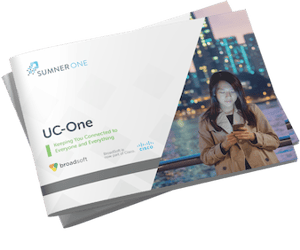
In our tech-driven world, although screens dominate many aspects of our lives, the timeless appeal of printed classroom materials remains strong. While technology undoubtedly offers a handful of benefits when it comes to facilitating teaching and learning, there's something about the tactile experience of flipping through a book or holding a flashcard that uniquely enhances learning.
The Power of Tangibility in Preschool Classroom Materials
Many can attest that there’s something special about holding a book in your hands or manipulating items in the classroom. Tangible materials engage multiple senses, providing a sensory-rich learning experience that digital alternatives simply can't replicate.
In Montessori classroom materials, for instance, tactile interactions with printed materials significantly help reinforce concepts and develop fine motor skills. For Montessori learners, meticulously crafted science materials for classrooms—like sandpaper letters and wooden number rods—form the backbone of the curriculum. These hands-on resources enable children to explore letters, numbers, and concepts through touch, aiding the development of their literacy and numeracy skills.
Printed classroom materials have a remarkable ability to capture the attention of young learners and ignite their creativity. Colorful illustrations, interactive games, and hands-on activities make learning enjoyable and memorable, helping foster a positive attitude toward literacy and education.
Benefits of Classroom Materials for Teachers
Printed classroom materials are beneficial not just for students but also invaluable tools for teachers. Teachers can access a diverse array of printed materials that support greater flexibility in lesson planning and differentiation. As a result, educators are better able to cater to every student's unique needs and interests so that no child is left behind.
Teachers benefit from:
- Enhanced Preparation and Organization
The classroom materials list for teachers includes textbooks, workbooks, handouts, and supplemental reading. Print materials allow for better organization and more accessible access during lesson planning and delivery.
- Consistency in Teaching
Printed materials provide a consistent reference point for teachers and students. Unlike digital content, which can be edited or lost, printed materials remain unchanged, ensuring every student receives the same information.
- Facilitation of Hands-on Activities
Printed manuals and guides are indispensable in subjects like science, where experiments and hands-on activities are essential. Science materials for classrooms provide clear, step-by-step instructions that students can follow independently or in groups, enhancing their practical understanding of theoretical concepts.
- Assessment and Feedback
Last but not least, teachers can use printed materials for quizzes, tests, and assignments. All of those can be easily annotated for feedback. This method helps provide precise and constructive criticism, which is vital for student growth.
Promoting an Engaging Learning Environment
A well-stocked classroom with high-quality printed learning materials can create an engaging and stimulating learning environment by offering the following:
- Variety of Resources
Having a wide range of preschool classroom materials caters to different learning styles. Visual learners benefit from colorful charts and diagrams, while readers and writers thrive with ample texts and writing prompts.
- Interactive Learning
Materials in Montessori classrooms, for example, are specifically designed to be interactive. These include puzzles, maps, and science kits encouraging exploration and curiosity. Such resources make learning active rather than passive, keeping students engaged.
- Cultural and Linguistic Inclusivity
Classroom materials for teachers can be tailored to reflect the cultural and linguistic diversity of the student body. Bilingual books, culturally relevant stories, and materials that reflect students' backgrounds can foster an inclusive environment where every student feels represented and valued.
Optimize Learning Outcomes with Printed Classroom Materials
Printed classroom materials continue to play a vital role in enhancing literacy skills and creating enriching learning experiences for students. These tangible resources offer many benefits, including bridging the tangible-digital gap, fostering interactive learning environments, and personalizing learning experiences.
If your school is looking for print solutions that can handle high-volume printing of classroom materials while supporting sustainability, you need SumnerOne. As the Midwest's leading print technology solutions provider, SumnerOne understands the education sector and offers customized print solutions that match each school’s needs.
Book a free print assessment today and discover what personalized solutions are best suited for producing your classroom materials.
 FREE EBOOK DOWNLOAD
FREE EBOOK DOWNLOAD


